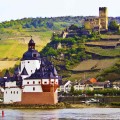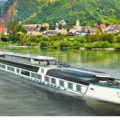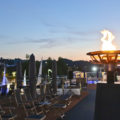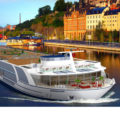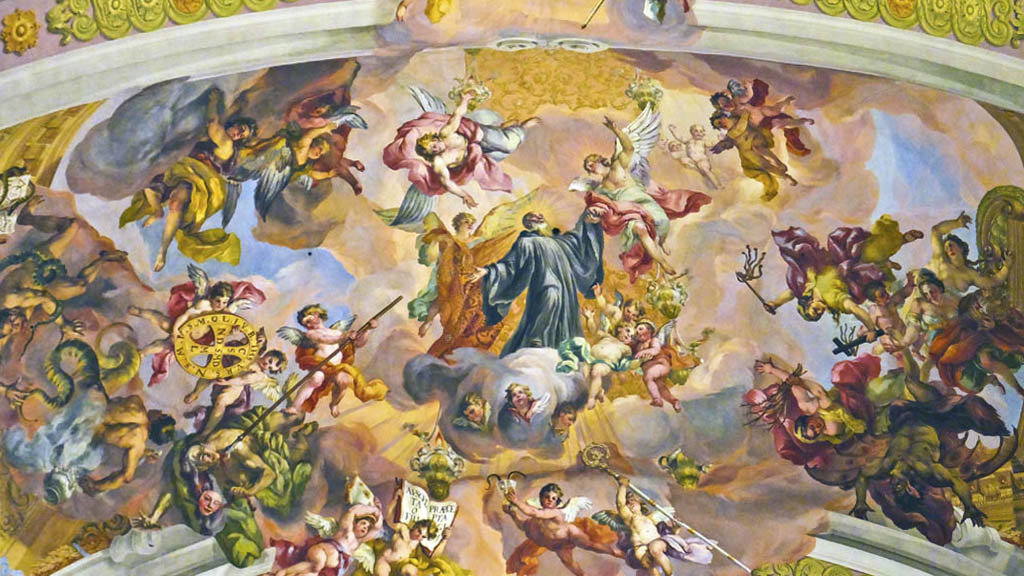
No cruise on the Danube River is complete without a visit to the monastery at Melk, but be sure to bring your sunglasses, both to protect against glare on a river cruise and for admiring the monastery’s visions of Heaven on earth.
Photographs can never possibly do justice to the intricate beauty and the radiant joy of Melk’s vibrant monastery. The ultra-ornate baroque interior of its soaring chapel has been freshly gilded with acres of gold leaf, so its walls rival the sun in brilliance.
An afternoon in the delightful Austrian village and its legendary monastery is just one highlight of a Danube river cruise aboard Viking River Cruises. The stretch of the river from Melk to Krems – easy enough to remember if you think of what you put in coffee – is by far the most scenic stretch of the Danube in Austria, a region known locally as the Wachau.
Generations of monks at Melk Abbey made it their life’s work to show their love of God through their artistry in wood, stone and paint. Pews in the chapel are not just seats, they’re sculptures; marble is carved and polished until it appears as light and flowing as silk.
Visitors must tour the chapel and vat library with a guide because this is still an active monastery and school. From a large airy terrace that looks out over the Danube monks still pause and admire the beauty of the landscape. Through enormous doors, you enter the library where brothers sit and study antique leather-bound tomes.
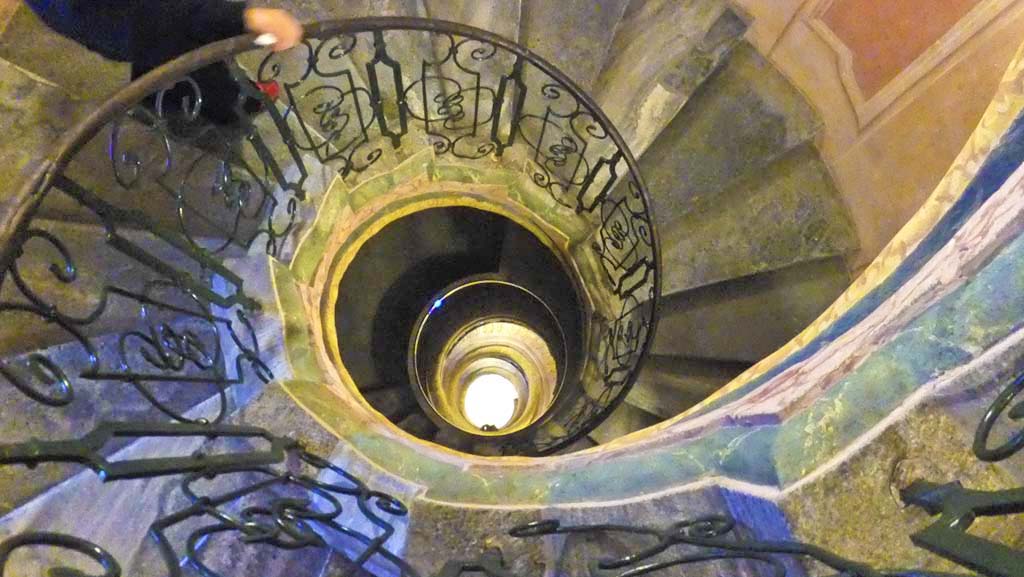
A first edition of Umberto Eco’s novel The Name of the Rose is proudly displayed near the library’s entrance. Melk was the home of that novel’s fictional narrator. It’s not the only modern book in the enormous collection, though. Histories of the Second World War and computer handbooks share the shelves with thousands of ancient hand-scribed manuscripts gilded by monks who worked here centuries ago.
The library’s vast ceiling mural depicts artist Paul Troger’s impression of Heaven, where saintly beings float effortlessly among clouds that apparently soar many stories above our heads. When the guide reveals the arched ceiling is actually flat and the apparently vaulted stone is all a trick of the eye, members of tour groups invariably gasp in unison.
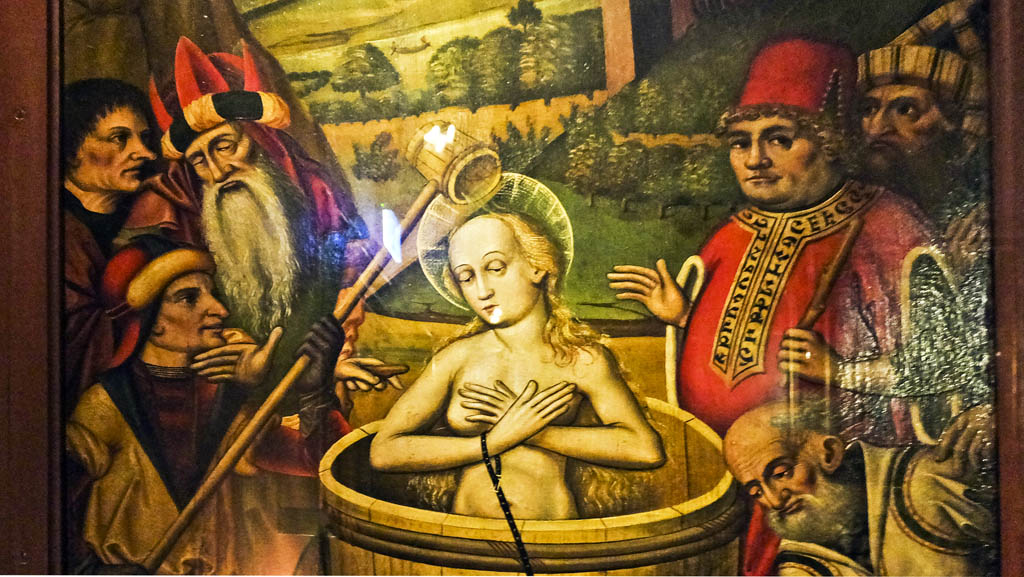
Parts of the stone walls surrounding the monastery may be almost a millennium old, but the building has been improved and beautified continually throughout its long history. Recent restorations supported by an Austrian Government trust fund and private donations keep the interior looking brand new. The massive courtyard has been recently rebuilt and frescoes on the walls have been repainted, although with modern abstracts in place of lost angelic themes.
Back on the ship for an afternoon of sailing, each bend in the Danube reveals another castle on a hillside and another tiny, picturesque village. Medieval families defended their holdings from these small fortresses set atop high bluffs. At the town of Aggstein, the 500-year old house at the top of the hill is described by the guide as the home of the Kuehenringer family, “what we would call a family of robber barons today.”
Even though the terraced hill-sides are extremely steep, they’re covered with crops like tobacco and corn as well as the prime product of the Wachau, wine grapes. The town of Spitz is almost hidden by groves of fruit trees, but it calls attention to itself with a bright steamship office bedecked with flags. The next town in view Weissenkirchen (white church) is, as you might expect, famous for its parish house of worship.
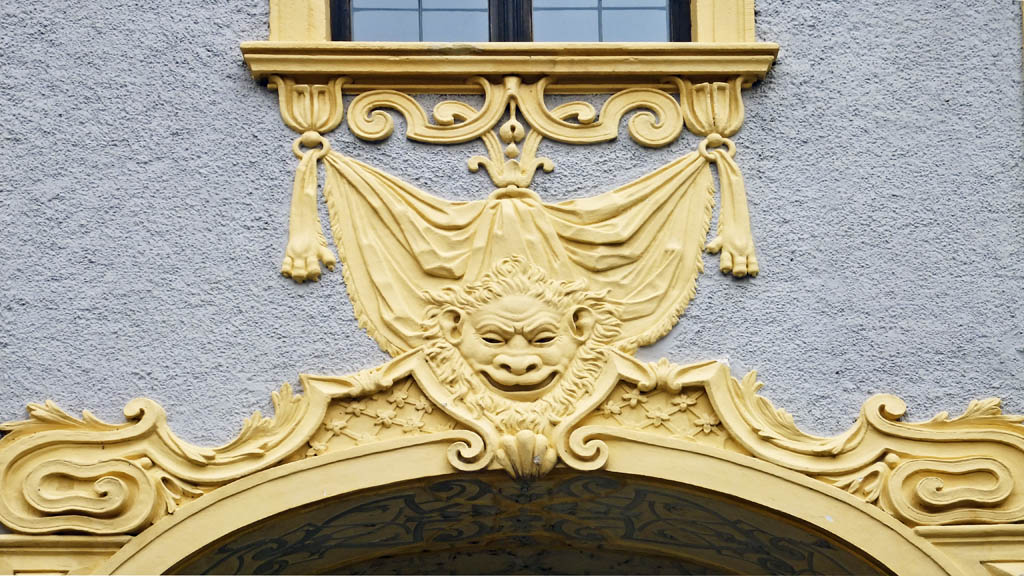
The most scenic town along the river comes next: Dürnstein, with its intricate monastery and tower and the ruins of the fort where in 1192 and 1193, England’s Richard the Lionhearted was held captive. Our stop in Dürnstein is just for a morning, but it’s a pleasant ramble along the stone-paved streets of the ancient walled town and a wine-tasting at one of the local vineyards.
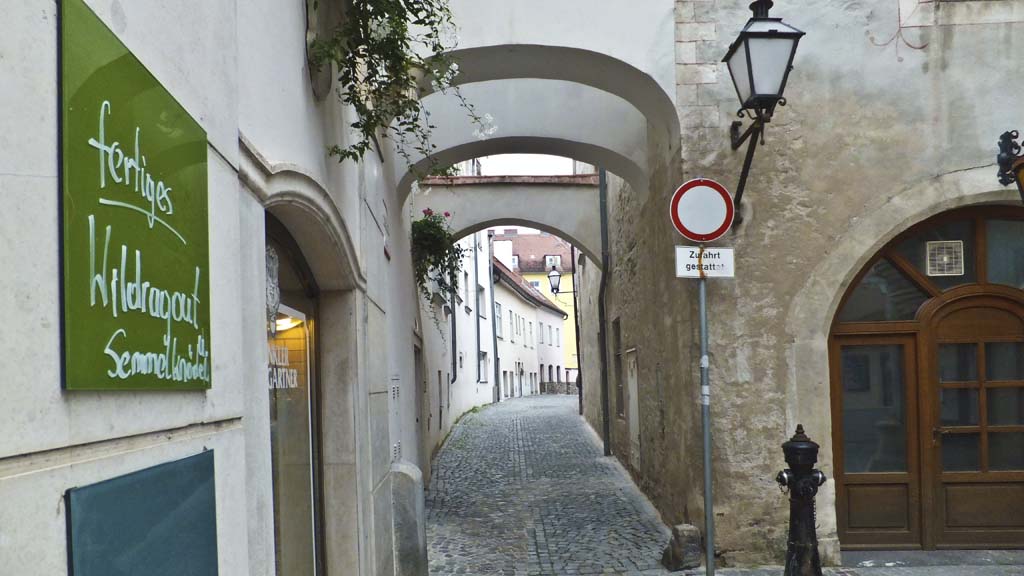
Just a couple of kilometres down the river is Krems, a large and much more modern town which still maintains a particularly Austrian style of stucco homes with tile roofs. Each window has a traditional flower box planted with geraniums or some other vivid blooms.
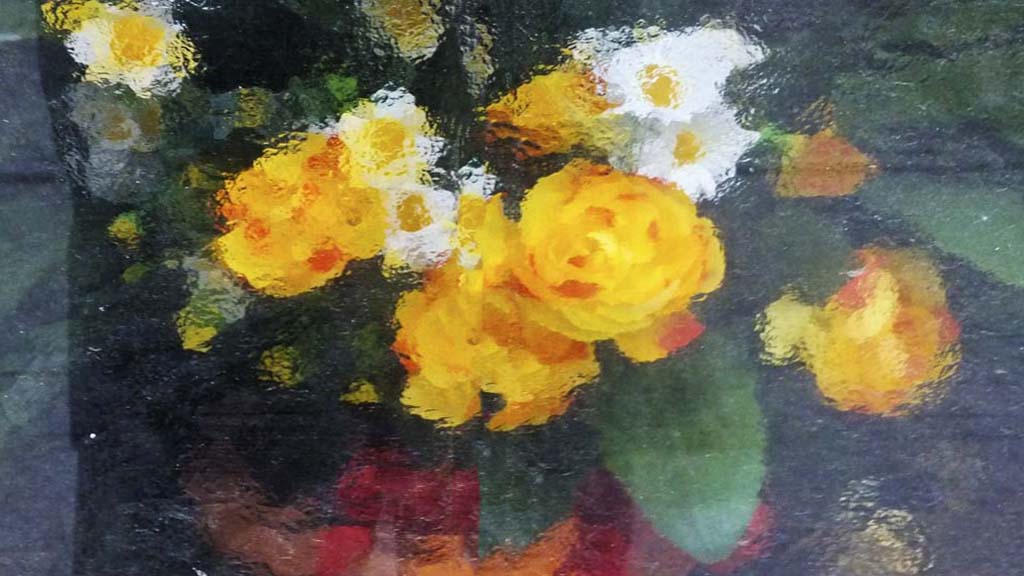
The floral style extends even to bridges, which have plantings along their railings. The town’s become extremely prosperous thanks to the popularity of the white wines that come from grapes that grow particularly well in the Wachau’s stony soil.
The only logical thing to do after a day of touring the well-preserved town is to stop in a local wine shop for a sampling of the local Grüner Veltliners and Rieslings.
Cheers!

